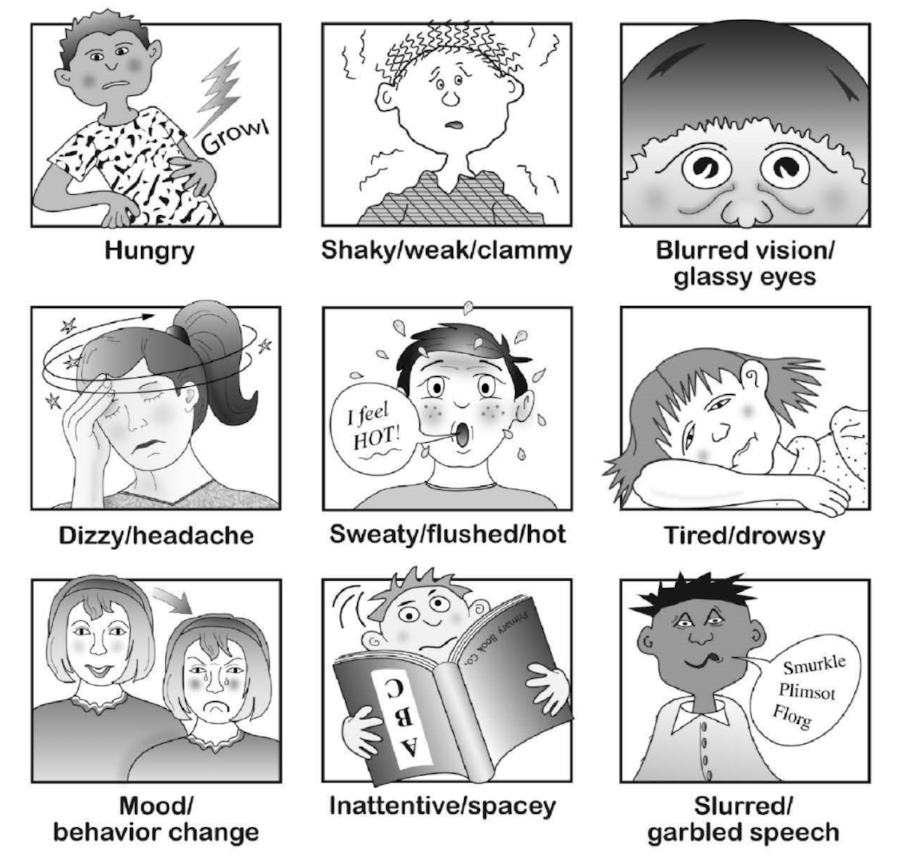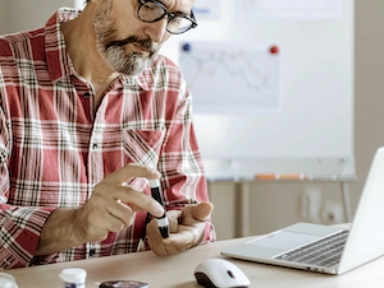Hypoglycemia
Hypoglycemia1
Symptoms of Low Blood Glucose
An individual may not always recognize symptoms of low blood glucose.
These common symptoms, and others, may indicate low blood glucose.
Hypoglycemia (low blood glucose) happens when blood glucose drops below optimal levels.
A blood glucose of 70 mg/dl or less is considered hypoglycemia usually occurs in people who take insulin or certain diabetes pills; although, it can happen to anyone with diabetes.
Hypoglycemia may result from one or more of the following:
- Taking too much diabetes medication
- Delaying or skipping a meal
- Not eating enough carbohydrate at your meal
- Exercising harder or more than usual
Follow the Rule of 15 - to treat hypoglycemia
Step 1
Check your blood glucose. If it is below 70 mg/dl, eat or drink 15 grams of carbohydrate. Examples include:
- 3-4 glucose tablets
- 15-gram tube of glucose gel or liquid
- 1/2 cup fruit juice
- 1/2 cup regular soda
If you cannot check your blood glucose right away, eat or drink 15 grams of carbohydrate just to be safe.
Step 2
Wait 15 minutes - this is important! It takes 15 minutes to feel better, no matter how much carbohydrate you use to treat the low blood glucose.
Step 3
Check your blood glucose again. If your blood glucose level is still low (<70 mg/dl), or if you still have symptoms, repeat steps 1 through 3.
If you still have a low blood glucose after the three checks, call 997.
Step 4
Check your blood glucose one hour after treatment, as additional carbohydrate may be needed if you don't have a meal or snack planned. (Blood glucose levels tend to drop about one hour after treatment.).py: Up-titration to 150 mg Q2W occurred at week 12 in 17% of patients who did not achieve their predefined target LDL-C at week 8. Overall, 84% had clinical ASCVD.1
- Diabetes Care and Education (DCE). https://higherlogicdownload.s3.amazonaws.com/THEACADEMY/bc90d439-1a0b-4d10-8426-0d0ccc40f516/UploadedImages/DCE/Documents/p49356-hypo.pdf Accessed 3rd June 2021.

.png/jcr:content/patient%20support%20hero%20(9).png)
.png)

.webp/jcr:content/About%20diabetes%20(1).webp)